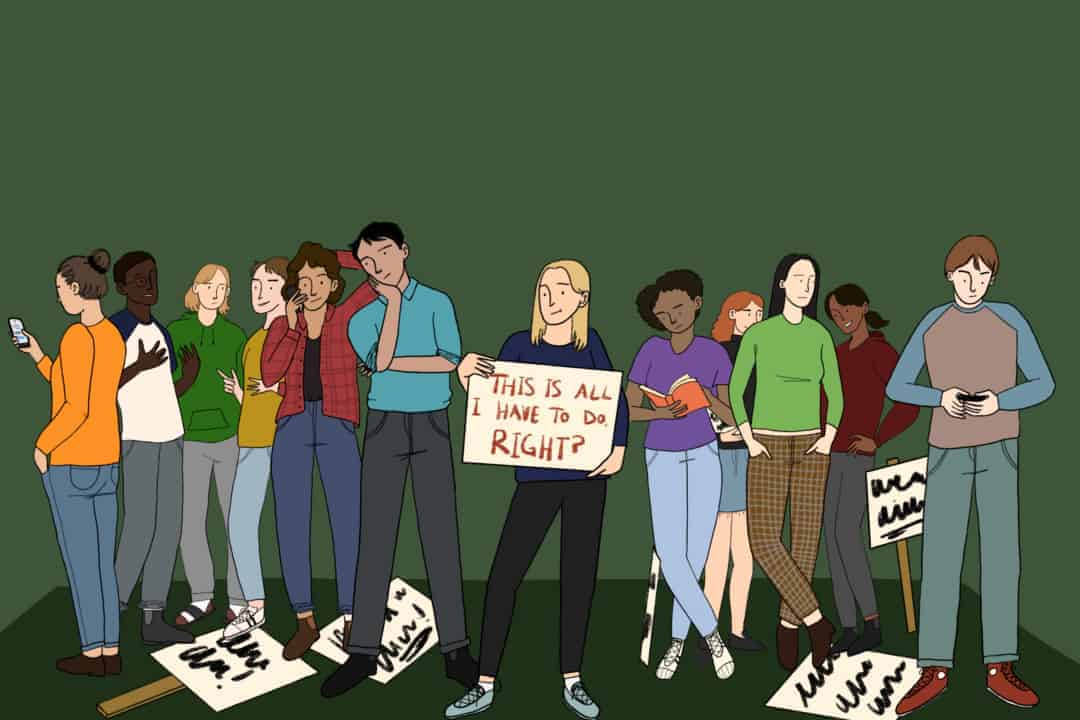Content warning: This article mentions violence against women and discusses racism and hate symbols.
Canada’s ‘Freedom Convoy,’ which began in late January, is an effort to protest vaccine mandates for truckers crossing the Canadian-American border, as well as a general protest against prevention measures against the spread of COVID-19, including mask mandates and lockdown procedures. Many used the opportunity to protest Liberal Prime Minister Justin Trudeau’s leadership.
The ‘Freedom Convoy’ is a misguided attempt to demonstrate frustration with the struggling Canadian economy and the government’s incapability of handling emergencies. It highlights the need for radical change and demonstrates the necessity of working-class organization. Hence, with the rise of anti-COVID-19 restriction protests, the importance of protests has become clearer than ever.
There are elements of the convoy that I vehemently oppose, regardless of how frequently they may actually appear. For instance, sightings of Confederate flags and swastikas have instilled a fear in politically marginalized or vulnerable demographics, like women and people of colour, and must be condemned by prominent figures in the protests.
However, while the protests have negatively impacted other working-class people by increasing traffic and making it harder for people to go to work, there are still some problems with referring to all the protesters as “selfish.” Small-business owners and working-class individuals were already systematically deprioritized during the pandemic through poor government financial aid, continuous preferences for wealthy corporations, and wages that cannot keep up with inflation. The fact that raising wages would, in turn, cause more inflation only further highlights the dysfunctionality of the economic system.
The difference between the protests inconveniencing working-class individuals and the government doing so is that the government is the entity with the obligation to facilitate functional economic conditions in the first place.
That fact notwithstanding, I don’t think harbouring an environment where harassment of any sort occurs is ever acceptable. However, the argument that the majority of Canadians do not support the protests is irrelevant to the government’s responsibility to listen to the issues it brings up, and it begs the question of whether a protest is legitimate only insofar as it is affirmed by the majority.
Protesting COVID-19 prevention measures without presenting viable alternatives to combatting the virus is questionable — but citizens can still look toward the convoy’s organization of the working class as a functional framework for demanding change.
Organizing the working class and withholding labour is one of the most effective ways to gain attention for a cause. Withholding labour from both the private and public spheres of society is how Icelandic women shocked their country into taking the first step toward women’s liberation and how Mexican women paralyzed their country momentarily in a desperate plea against femicide. They showed their societies that working-class women are essential for a country to function.
Once again, I believe the support for a protest against public health measures during a pandemic is misguided, but it cannot simply be disregarded. Some Canadians might disagree with the approach protesters are taking to create change, but they may agree that some degree of change is necessary.
In observing the division of people for and against the convoy, I have noticed a division of the working class along ideological lines. Both ‘sides’ protest in different ways about different topics. Some protest the construction of pipelines through unceded land or the municipality spending nearly $2 million clearing homeless encampments, while others protest virus-spreading prevention measures, which they interpret as “tyranny.” While I see the pipeline and encampment protests as more informed — and thus more legitimate — than the COVID-19 prevention measure protests, these protests are both manifestations of a dissatisfaction with a government that refuses to resolve situations effectively.
As a collective, the convoy represents a deeper issue to be addressed: the disgustingly poor economy, which is marked by skyrocketing housing prices, expensive food and gas, and wages that cannot sustain the average worker today. These problems have been present during both Conservative and Liberal leadership and have only been accelerated by the pandemic.
The convoy has incorrectly identified and protested the one element the government has theoretically gotten right — its pandemic response. But while I believe these protests are rationalized by misinformation pertaining to the pandemic, the convoy has highlighted the necessity for stronger, better-informed protests based on class unity to fight actual problems.
At this point, the only viable solution is a radical reordering of society with the public’s interests in mind. We see fractions of a revolution every now and again, but they all remain unsuccessful because we hesitate to push the boundaries. While many Canadians oppose the current convoy, we cannot ignore Canadians’ general discontent with the government. Hence, protests are more significant than ever. This is not a centrist call to pacifism but a radical call to class collaboration.
Lina Tupak-Karim is a second-year sociology and professional writing and communication student at UTM.


